How to tie up tomatoes in a greenhouse and open field
How to properly tie tomatoes in a greenhouse or outdoors is not known to all gardeners. Gardeners often wonder why a garter is needed, and how much of a problem it can solve. This standard and seemingly optional procedure will protect the crop from spoilage and help protect plants from damage. If the bush is not tied up in time, it will break, and tomatoes lying on the ground are easy prey for slugs.
Why is tying tomatoes necessary?
If you do not carry out such procedures, the likelihood of the following unpleasant events increases:
- Fruit lying on the ground after watering or rain may begin to rot; if the soil is humid, then tying up will help avoid such problems.
- Under the weight of ripe fruits, the bush can break, as a result of which the tomatoes will die, and the yield indicator will be significantly affected.
- When ripe tomatoes lie on the ground, various pests will certainly want to feast on them.
- The procedures are also carried out in order to avoid a lack of sun color, because if the fetus is in a suspended state, it receives the required amount of ultraviolet radiation, ripens faster.
To prevent the plant from dying, the tomatoes managed to reach maturity, and the yield indicator did not fall due to the invasion of slugs, they resort to using a garter. This procedure is carried out in several ways, has its own characteristics and directly depends on the variety of tomatoes and the quality characteristics of the soil.
Attention! Tomatoes are tied up in polycarbonate greenhouses; this procedure is not neglected when growing tomatoes under a film or planting them in the ground.

General rules and recommendations for garter tomatoes
To properly tie up the plant, you must adhere to certain rules:
- some gardeners advise to carry out a garter immediately after planting a tomato in the soil;
- adaptations will have to be reconstructed as the bush grows and develops; make sure it advises the growth of the plant;
- when carrying out the procedure, make sure that the device does not harm the plant stem, does not squeeze it, or cause it to dry out.
The direct purpose of the device is to support the bush and ripening fruits. You will have to make sure that the tomatoes do not touch the ground, and the stem of the plant is not subjected to serious pressure.
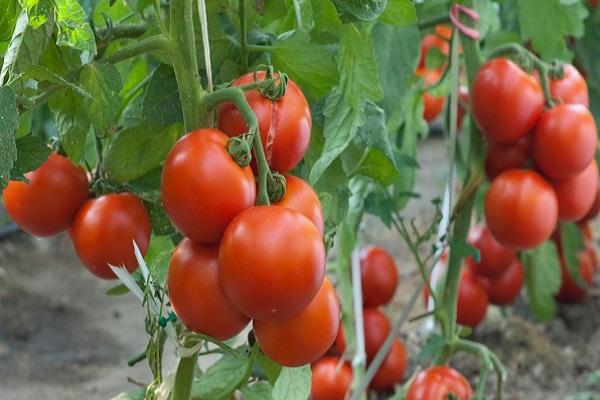
Tomato Garter
You can use any tool that can support the bush, but it is better to resort to the help of proven devices that cannot harm the tomatoes and affect the yield.
Twine
This is the name of the device that is attached to the frame beams of the greenhouse. He is hooked to a bush, while the rope (the twine itself) is in a taut state, but this is a moderate tension. As the tomatoes grow, they will strive upward, twine around them, and it will provide them with reliable support.
Naturally, if there are no frame beams, then it is extremely difficult to use such a garter method; you will have to build a special fastener.

A loop
Not many gardeners use a free loop, for this you will have to:
- Fasten the rope; use the vertical beams of the greenhouse frame as an attachment.
- Throw the rope over the bindings and form a loop so that the tomato bush will fit into it.
- If there are fruits on it, then the loop should be located under them, as if supporting the stem of the plant.
This method is good in that periodically, as the fruit grows and develops and the bush itself, you can change the mount by raising the loop higher or lowering it down. A loop can combine several bushes, provided that they grow in close proximity to each other.
Clothespins
Clips are successfully used as a retainer and can be purchased from specialized stores. A clothespin holds several bushes together and helps attach them to the post. Pegs are used as the latter.
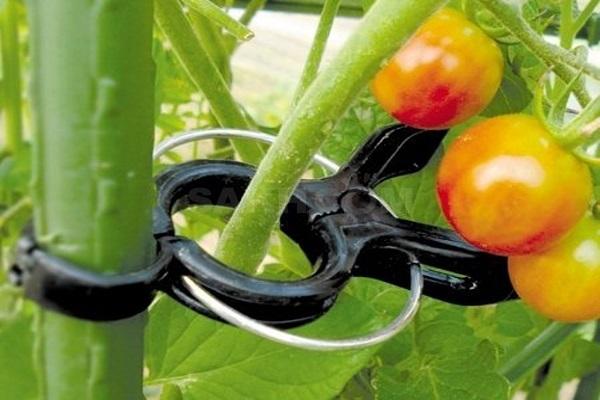
Rods
Pegs or sleepers can be either vertical or horizontal. Consider the main garter options that gardeners are willingly using:
- Stakes can be placed between the rajas or in the immediate vicinity of the bush. As it grows and develops, the bush will use the peg as a support.
- You can put the props horizontally and tie tomatoes to them, in which case the device will have to be modernized, to monitor the growth of the bushes.
- Some gardeners attach ropes to the trellises and hook the tomato bushes, which allows you to use a free loop.
Ways to tie a tomato
Better ideas of gardeners have already been implemented, "reinvent the wheel" is not required. It will be enough to use proven methods; preference is given to those that have proven their effectiveness in practice.
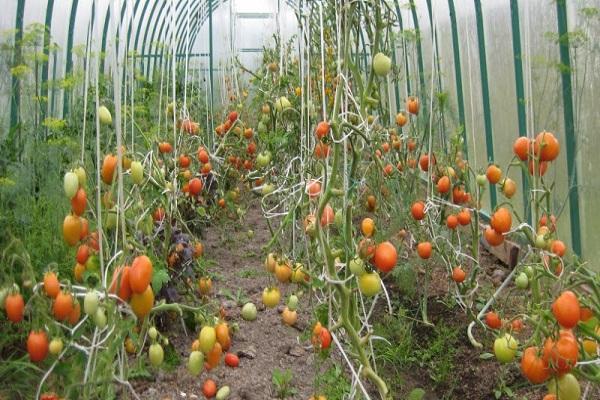
Fastening to a wire frame
A structure, a wire structure, is placed around one or several bushes. As they grow, the bushes will use this structure as a support. It is advisable to help the plant and push the fruits through the wires to avoid damaging them.
You can build a wire structure around one bush, in which case, as it grows, it will "lean" on the structure, use it as a support. You can use both fine and coarse mesh, depending on your preferences.
Linear mount
An unusual structure is being built in a greenhouse. To make tying, you will need:
- As the basis for the construction, we use large stakes or frame beams of the greenhouse located in its various parts.
- We install one or more large sleepers in the middle of the structure. Checking the mount for stability.
- With the help of a rope, we connect the structure so that the result is a structure that can withstand the weight of the fruit.

Trellis mount
An original way of tying tomatoes, which is not often used, for certain reasons. The trellis is placed in various ways, the device can be represented in the form of a horizontal, as well as a vertical attachment:
- if you are cultivating tall varieties of tomatoes in greenhouse conditions, then use horizontal trellises as an attachment. Place them next to each bush;
- you can connect vertically arranged trellises using horizontal structures;
- in essence, the trellis method is similar to the usual tying of tomatoes with pegs, only in this case the pegs are large, which eliminates the need to change them.
Mesh mount
In a polycarbonate greenhouse, such a structure without stakes with reinforcement and mesh looks great.
It is worth adhering to the following scheme of actions:
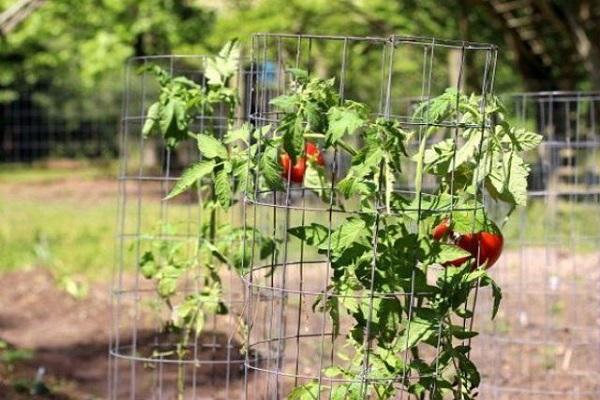
- Using a coil of wire and fittings, form a mount in the greenhouse.
- The wire is placed at different heights, it can be fixed from above, using a greenhouse frame as a support.
- Place the reinforcement in the lower part, use a wire to connect the reinforcement and the upper parts of the greenhouse.
- If necessary, use horizontal sections of the greenhouse to form a mesh inside the structure.
This type of garter is called lattice. If we are talking about tomatoes that have been planted in the ground, then you can surround them with a net, then push the ripe fruits through the holes in it. At its core, this type of support resembles a corral in which tomatoes grow and ripen successfully.
You can make the mesh yourself, but it's easier to purchase a ready-made one. It is surrounded by several bushes, so that the plants rest on the attachment sites from different sides.
On wooden pegs
Everyone knows how to tie tomatoes in this way. Now the tree is rarely used; preference is given to special plastic devices.
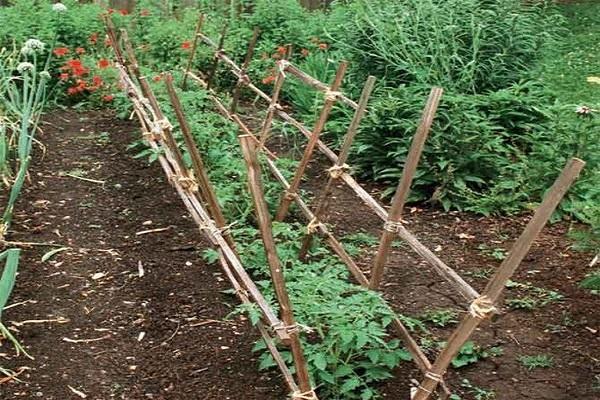
What is the essence of the method:
- drive in a medium-sized peg next to the bush;
- make sure not to damage the rhizome;
- we tie a bush to a peg with a rope;
- as the plant grows, we upgrade the mount.
If you are using a tree, then decide on the height of the peg, if the support is not high enough, then it will have to be changed.
Features of garter tomatoes in the greenhouse and in the open field
It is easier to tie tomatoes in a greenhouse or greenhouse for several reasons:

- You can use the frame of the structure as a support.
- It will not be difficult to build a mount using available materials and greenhouse beams.
If the plant was planted in open ground, then it will be necessary to build a structure that can be used as a support for the plant.
Consider the preferred types of garters for various structures:
- In a polycarbonate greenhouse or greenhouse, we use trellises - high beams that abut against the roof of the structure and allow tall plants to rest on the prepared beams.
- In the greenhouse, preference is given to the lattice method, which implies the connection of the arches of the structure with parts of the reinforcement for the construction of the support.
- If the tomatoes were planted in the ground, then you can use pegs, a net. It all depends on the preferences of the gardener.
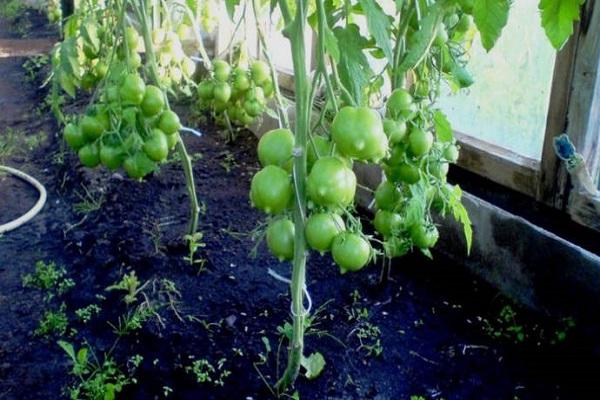
In greenhouse conditions, plants grow faster, they reach 2 meters in length. As for tomatoes that are planted in the ground, their achievement of such height indicators is considered a rarity. For this reason, the fastenings are not made high, they are of an average size - this is quite enough to support the tomatoes and achieve the required yield indicator.
Gardener mistakes
If we talk about beginners, then they tend to make mistakes, but not only beginner gardeners "sin" with this. In most cases, gardeners make standard mistakes:
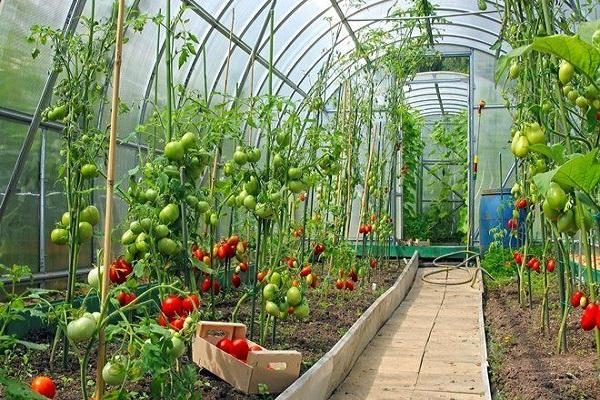
- Low-quality material is selected. In this case, the structure used as a support may not support the weight of the fruit, collapse under the weight of the tomatoes, crushing the bush. To avoid such problems, do not use the same mount several times, upgrade the structure.
- Monitor the pressure level.If the loop strongly squeezes the stem, it will disrupt the flow of juices in it, lead to the drying out of the plant, as a result of which it dries up and does not bear fruit.
- Check the reliability of the support and, if necessary, reconstruct it. A similar need arises if the bushes do not have growth restrictions.
- Make sure that the fruits do not touch the ground, otherwise the meaning of carrying out such procedures is lost, and tomatoes still remain under threat.
To tie tomatoes, you do not need to have special skill, this seemingly simple procedure will help to significantly increase the yield indicator and avoid various problems that gardeners often face.
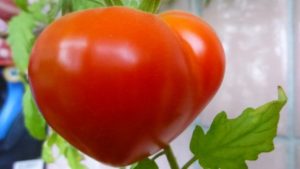


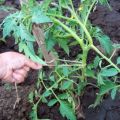




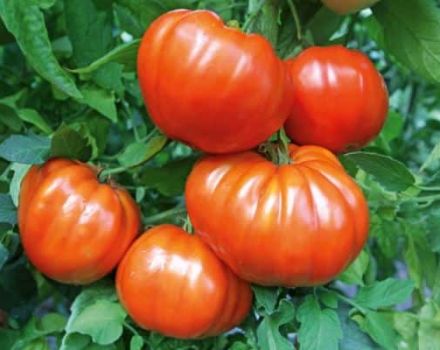
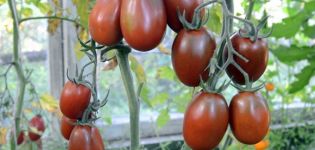
Special attention should be paid to the garter, because it is thanks to it that you can get an even greater harvest than without it, so do not be stingy and do not be lazy, do it efficiently, you will not regret it!